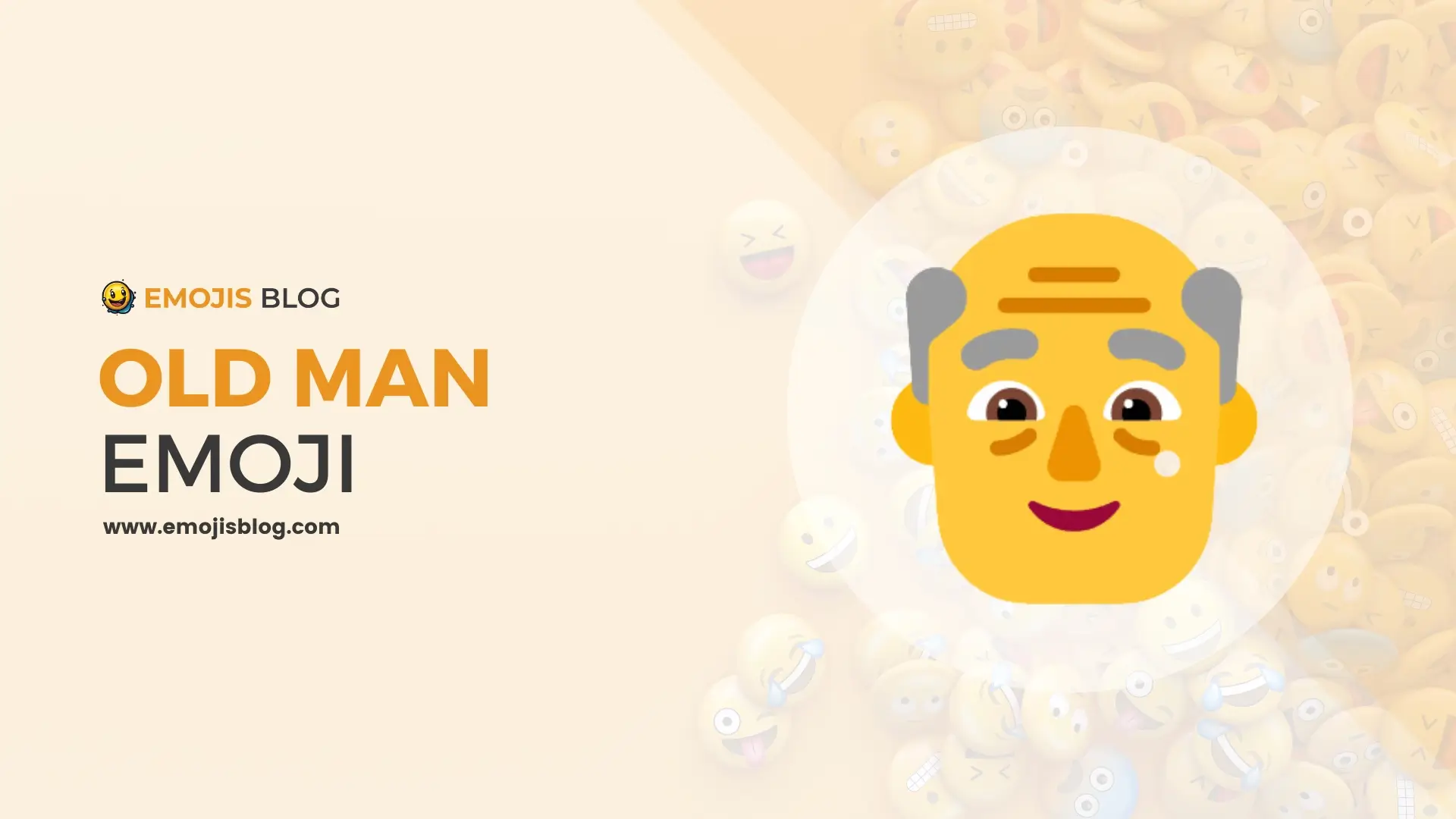What Does The Old Man Emoji Mean 👴
👴
The Meanings Of Old Man Emoji 👴
The old man emoji 👴 depicts the face of an elderly man, characterized by features such as white or gray hair, wrinkles, and often glasses, representing aging, wisdom, and life experience. Introduced to convey the concept of elderliness in a respectful and relatable manner, its usage varies widely, from literal references to the elderly, to symbolizing wisdom and experience, or even humorously commenting on the aging process. As part of the digital lexicon, this emoji enriches communication by allowing users to express complex ideas and emotions related to age and the passage of time with a single, universally recognizable symbol.
Technical Information
| Attribute | Detail |
|---|---|
| Emoji | 👴 |
| Description | Face of an elderly man, characterized by features such as white or gray hair and wrinkles, often used to represent aging, wisdom, and experience. |
| Unicode Version | 6.0 |
| Emoji Version | 1.0 |
| Category | People & Body |
| Subcategory | Person-Role |
| Introduced in | 2010 (Unicode), 2015 (Emoji) |
| Codepoints | U+1F474 |
| Shortcode | :older_man: |
| Variations | Skin tone modifiers can be applied to display different ethnicities. |
Understanding the Old Man Emoji: 👴
The old man emoji, represented by a simple graphical image of an elderly man’s face, is a digital icon that conveys more than just the concept of aging. This emoji is part of a broader spectrum of emoticons that are used to express a variety of emotions, situations, and characteristics related to age, wisdom, and life experiences. Below, we explore the origins, usage, and cultural significance of the old man emoji to provide a comprehensive understanding of its meaning.
Origins and Evolution
The old man emoji 👴 was introduced as part of Unicode 6.0 in 2010 and subsequently added to Emoji 1.0 in 2015. This inclusion was part of a larger effort to diversify the range of human emoticons available for digital communication. The design of the emoji varies across different platforms, with each rendition aiming to capture the essence of elderliness through features such as wrinkles, gray hair, and sometimes glasses. These variations in design reflect the tech industry’s attempt to provide relatable and respectful representations of age.
Symbolism and Usage
At its core, the old man emoji symbolizes aging and the elderly. It is often used in conversations to refer to someone of advanced age, whether in a literal sense or, sometimes, in jest among friends. Beyond its literal interpretation, the emoji carries connotations of wisdom, experience, and a life well-lived. It can be used to express respect towards someone’s knowledge or achievements, often acquired over many years.
In some contexts, the emoji is employed to inject humor into discussions about aging, such as joking about feeling old after experiencing a minor ache or pain. However, it’s important to approach its use with sensitivity, as perceptions of aging and respect for the elderly vary significantly across cultures.
Cultural Variations in Perception
The interpretation of the old man emoji can vary widely depending on cultural context. In societies where the elderly are highly revered, using the emoji may be seen as a sign of respect or affection. In contrast, in cultures with different attitudes towards aging, the emoji might be used more lightheartedly or with a sense of irony.
Digital Communication and Emojis
The old man emoji is part of a broader trend in digital communication towards using visual symbols to convey complex emotions and ideas quickly and efficiently. Emojis, in general, have become a universal language, transcending linguistic barriers to express feelings, reactions, and nuances that might be difficult to capture in words alone.
Conclusion
The old man emoji 👴 serves as a digital homage to aging, wisdom, and the elderly. Its use in communication is multifaceted, ranging from expressing respect and admiration to sharing light-hearted jokes about getting older. As with all emojis, the context in which it is used plays a crucial role in determining its meaning. Understanding the nuances of this emoji helps enrich digital conversations, making them more expressive and culturally sensitive. As digital communication continues to evolve, the old man emoji will undoubtedly remain a valuable tool for representing the richness of the human experience.

